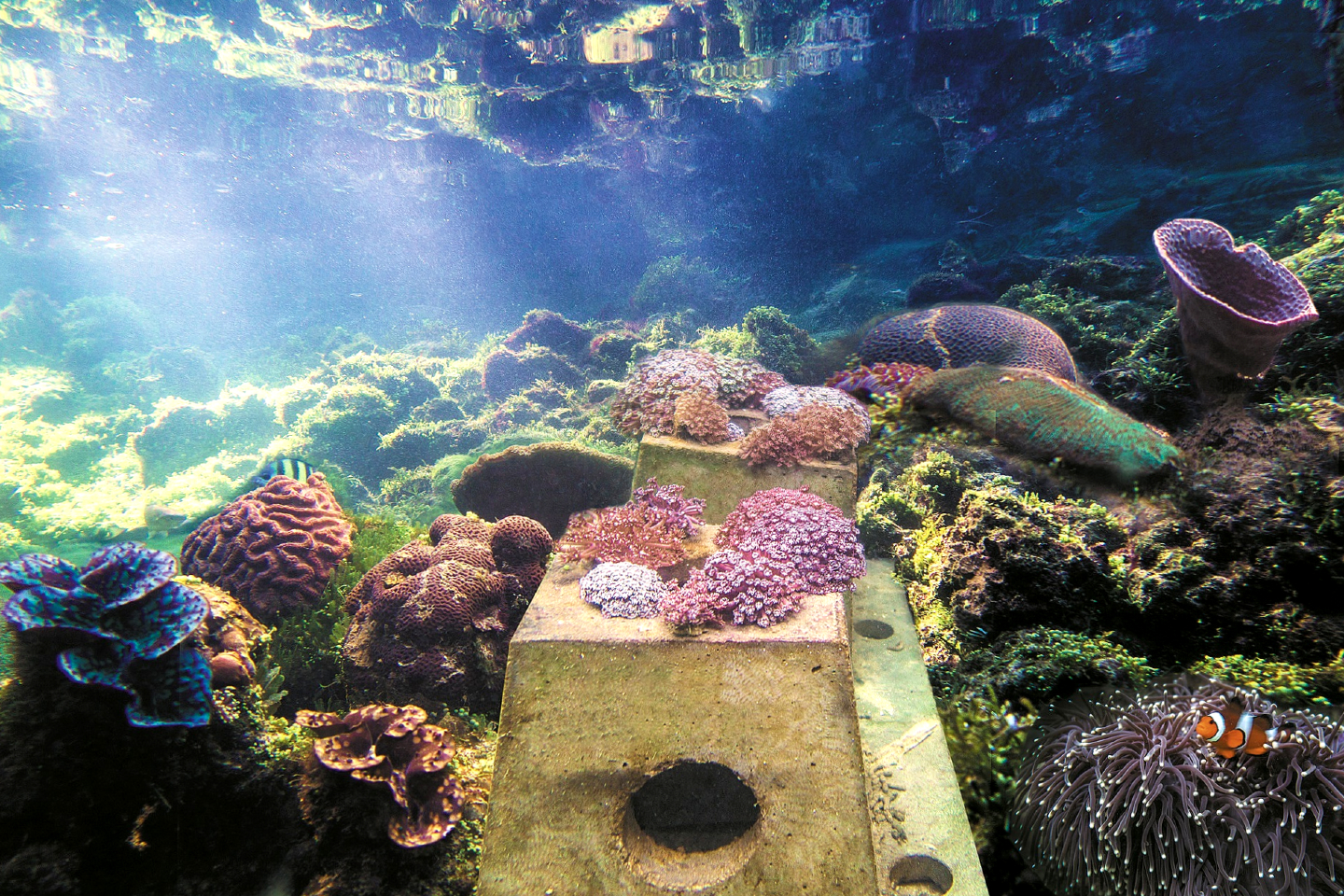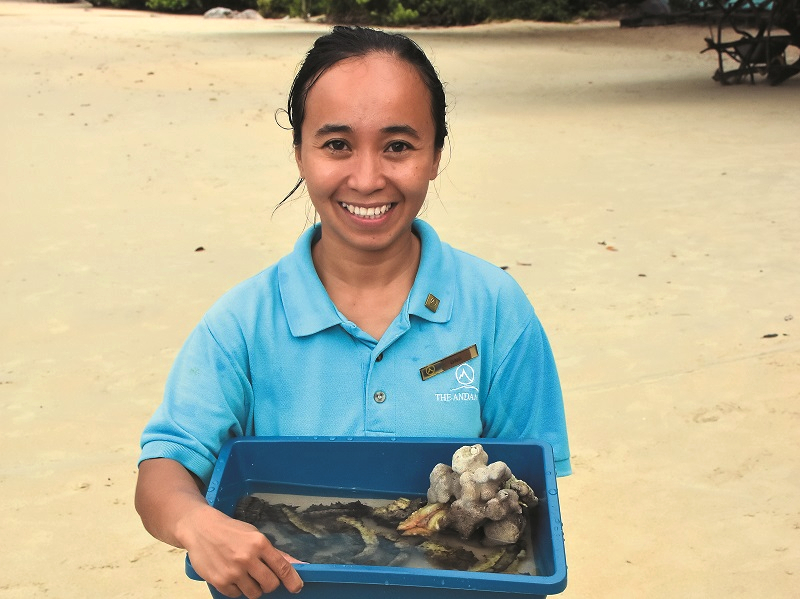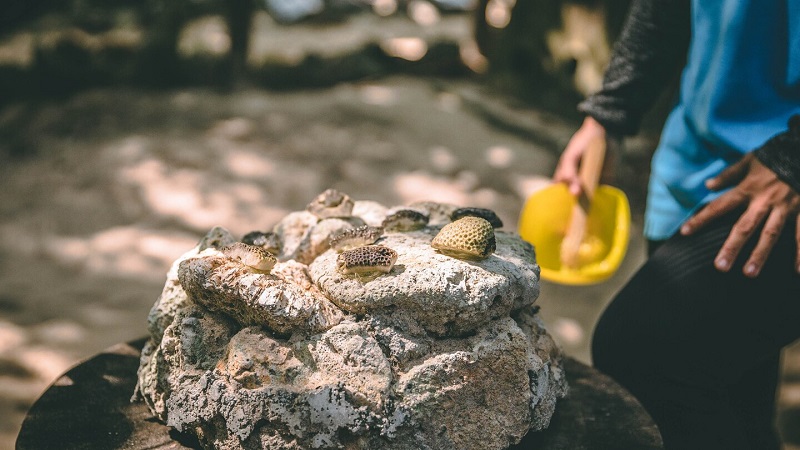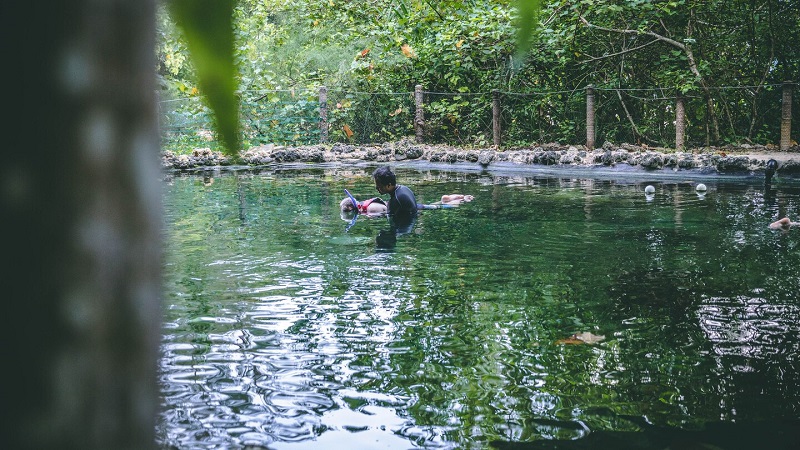
New corals attach themselves to the ARMS, which weigh 250kg each, and are deployed to form artificial reefs (All photos: The Andaman)
In the grand scheme of things, releasing 20 sea cucumbers into the ocean is a baby step towards saving the squishy creatures from extinction. But look closely at how nature takes its course and you will see how one polyp saved at a time can eventually add up to a coral reef.
That is what The Andaman, a Luxury Collection resort on Langkawi Island, has been doing since 2010. To mark World Oceans Day in June, it launched a Gamat Regeneration Project, the latest phase of its marine conservation initiatives.
Gamat — the Malay word for sea cucumber — have long been regarded as a delicacy in Asian cooking. Closer to home, they are the main ingredient in gamat oil (used by locals to heal various ailments), cosmetic creams, shampoo and toothpaste.
Overfishing by islanders for their medicinal properties has eaten into the population of gamat, says marine biologist Hidayah Husein, fondly called Daia, Andaman’s lead coral curator. “People are not aware that the number of sea cucumbers around Langkawi is decreasing at an alarming rate.”
coral_curator_hidayah_husein_daia_with_the_regenerated_sea_cucumbers._1.jpg

As gamat is a source of income for the community, it is not possible to stop people fishing them. But regeneration can ensure they do not become extinct, Daia adds. The project began in January and bore fruit within six months, producing 50 sea cucumbers.
In June, hotel manager Vijay Kumar welcomed a small group of guests gathered on The Andaman’s beach. After introducing the Golden Sea Cucumber, a species primarily used to create products in Langkawi, Daia emphasised the importance of keeping gamat alive. Then everyone rowed out carrying trays with regenerated gamat, to drop them back into the ocean.
“Gamat have no brains or eyes, just a mouth and tentacles to feed, a stomach, bottom and legs to move,” she explains. Regeneration involves inducing stress in the simple creatures, which play a big role in the eco system.
“Tie them up and they will twist and try to escape from danger. The twisting causes the gamat to break into two parts. But in six to seven weeks, they will regenerate the lost parts and become two compete sea cucumbers again.”
Gamat help recycle nutrients, breaking down detritus and other organic matter, after which bacteria can continue the degradation process. Known as underwater vacuum cleaners, they eat up sand, which passes through their body and is expelled after it has been cleaned. As they digest the sand, they also produce calcium carbonate, which forms a skeleton that protects coral animals from predators and offers a substrate to which new coral polyps can attach.
lgklc-coral-transplating-6114-hor-wide.jpg

This whole process lends itself to The Andaman’s coral conservation project, started in 2010 after an 8,000-year-old coral reef fringing Datai Bay was found to have been damaged by the 2004 tsunami. The hotel initiated coral clearing activities, encouraging guests to help remove dead corals from the reef at low tides and take part in coral walks to learn more about marine ecosystems.
Datai Bay has the highest diversity of corals in all of Langkawi — more than 60 species have been discovered in the bay itself, Daia says. Over 600 types of reef-building corals can be found in the Coral Triangle, located in the Western Pacific Ocean, which consists of waters from six countries, including Malaysia.
After the tsunami, thousands of dead corals in the ocean were rolling over and colliding with live ones, creating even more damage. Loose pieces found lying around Andaman were brought back to its coral nursery, believed to be the first of its kind in Southeast Asia, set up in 2012 to facilitate rescue and rehabilitation.
Here, the corals are cut into small pieces and replanted on mini concrete blocks or ARMS (artificial reef module system). After four to 12 months of nurturing, the new polyps are relocated in the sea, where they blossom as part of a coral garden.
lgklc-guided-snorkeling-6112-hor-wide.jpg

The nursery is like an outdoor school for hands-on learning: Visitors can grow corals and transplant them onto new substrates, which are eventually put back into the ocean. Couples can choose heart-shaped ARMS for a “coral ritual” — the translated corals are like a first “baby”, Daia says.
The coral nursery is ideal for snorkelling. Put on your life jacket and goggles and a staff will guide you around, pointing out the wonders that lie underwater.
Wannabe young marine scientists can spend a morning, or day, at the Marine Life Laboratory with a marine and coral curator, feeding corals with plankton, watching how house pumps and filters work, or taking the temperature of water and doing pH tests. Grownups will find lots to see, from colourful corals swaying in aquariums to specimens on display and wall charts filled with those enchanting animals.
Tucked between the Andaman Sea and an ancient rainforest, The Andaman welcomes visits by schools and corporations to its coral nursery. As at May this year, it had hosted 18 marine biology undergraduates on internship programmes that exposed them to books and journals, technical equipment, coral research and propagation, and artificial reef module design and management. May figures also showed an average of 15,000 visits to the nursery every year.
In 2014, The Andaman partnered Lafarge and Universiti Kebangsaan Malaysia to introduce ARMS. The 10-year-plan project to develop a sustainable fishing resource for the people of Langkawi reaches out to guests, who can help the coral team build concrete structures that serve as a coral substrate and a living space for juvenile fish.
“After parts of the coral reel were destroyed by the tsunami, the fishes had nowhere to stay,” Daia says. “ARMS provide them a habitat — clown fish shelter inside to hide from predators.” The team notices that corals have slowly attached themselves to these artificial reefs, and spawned and bred new clusters.
A total of 55 ARMS, weighing 250kg each, and 210 mini ARMS were deployed over the last five years and 1,500 corals were placed back in the reef. The nursery now holds 400 baby corals waiting to be released.
The Andaman has won recognition for its efforts, carried out over the last decade. It won the Asean Green Hotel Standard Award for 2018-2020 and was named Best Eco-Friendly Resort in Asia at the Haute Grandeur 2017 Global Hotel Award. That same year, it was runner-up for the Conservation prize at the inaugural Premier Holidays UK Partner Awards and chosen as Malaysia’s Best Luxury Wildife Resort at the World Luxury Hotel Awards.
As for those guests who pitched in, the brief, intimate encounter with marine life at a resort where Nature commands respect is sweet reward.
This article first appeared on Sept 30, 2019 in The Edge Malaysia.


